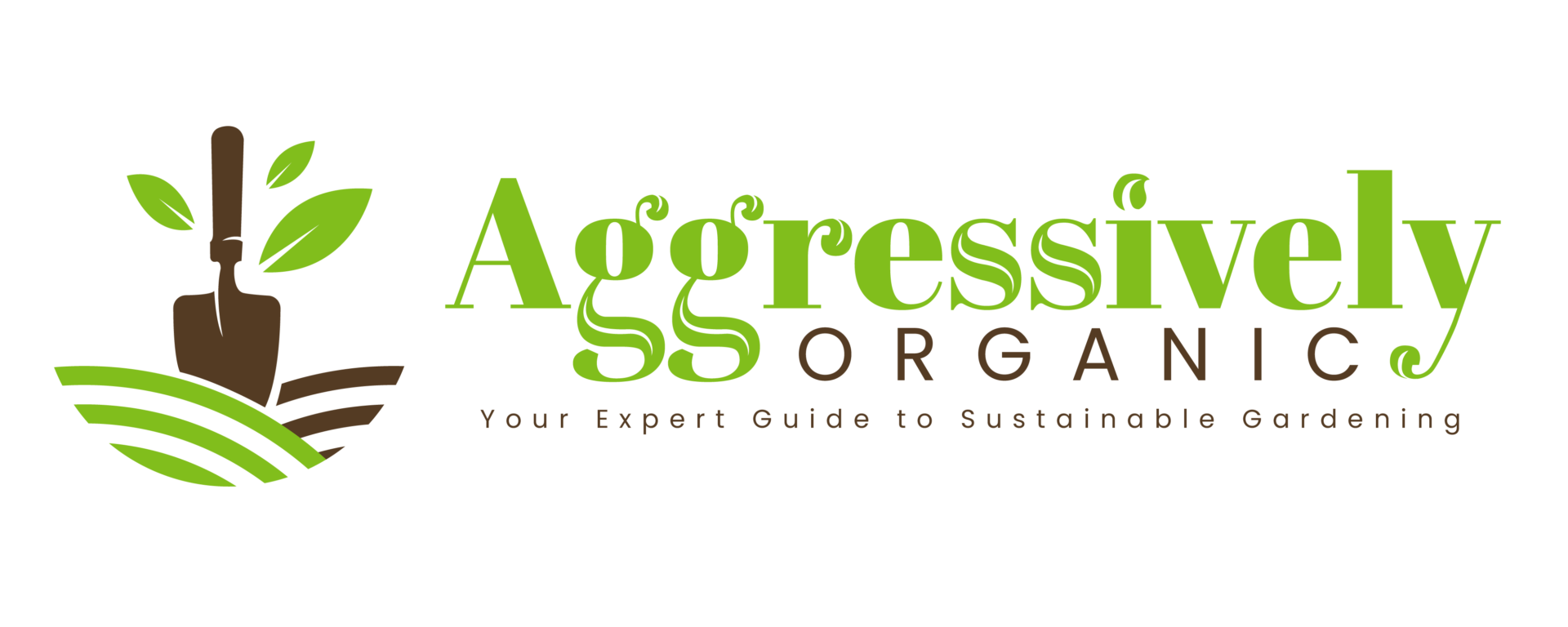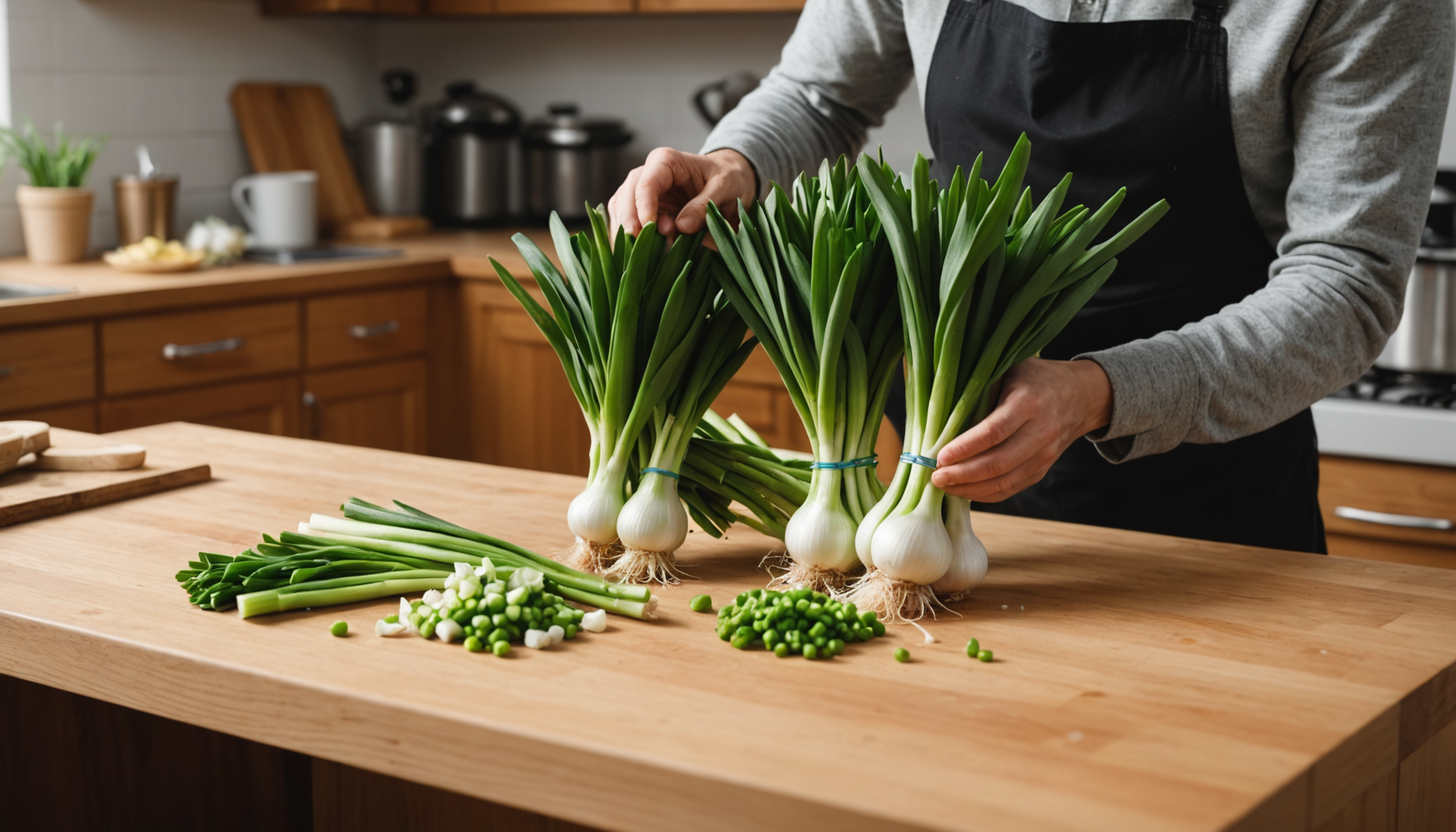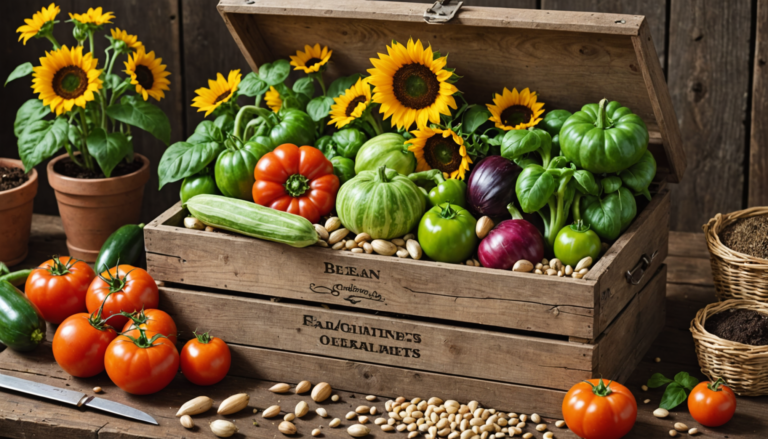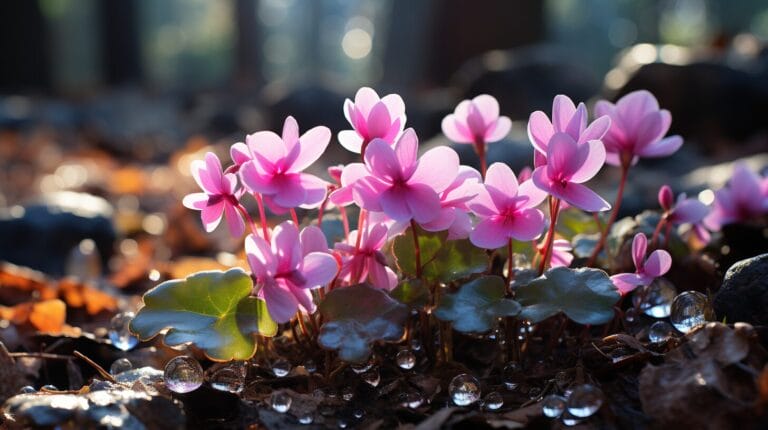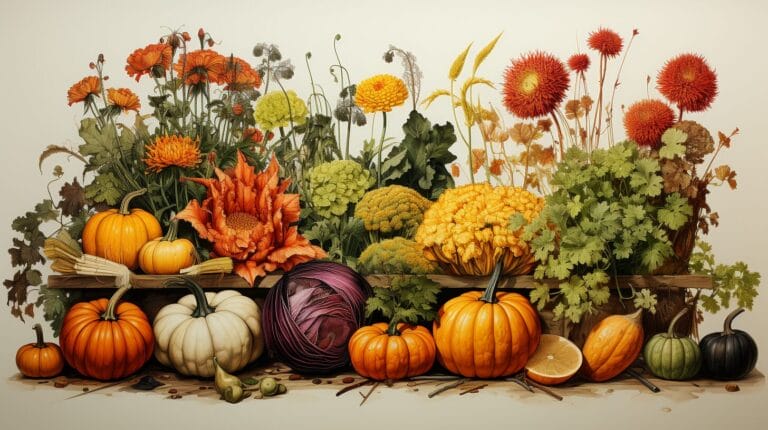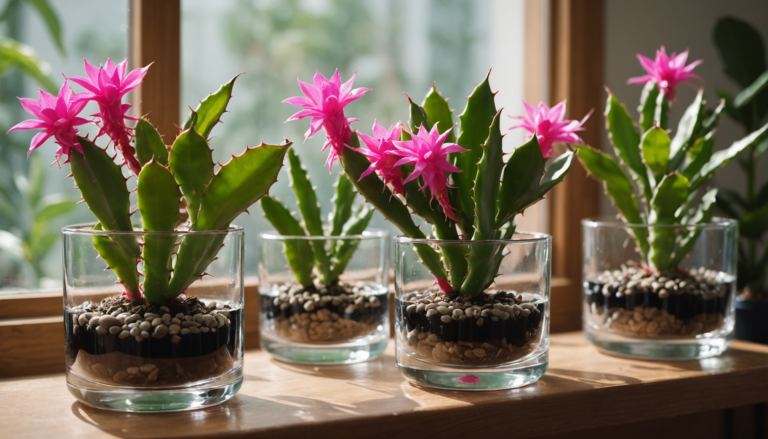Have you ever thought about turning your kitchen scraps into a fresh source of flavor? Learning how to plant green onions indoors is not only fun, but it also helps you reduce waste while enjoying delicious homegrown veggies! Green onions are super easy to regrow from the cuttings you might usually toss in the trash. Plus, they thrive right on your windowsill, giving you tasty greens year-round.
Not knowing how to care for your indoor green onion garden could mean missing out on endless harvests and fresh flavors for your meals. In this article, we’ll explore the benefits of growing green onions, step-by-step methods to regrow them from scraps, and the best soil and container options to keep your plants happy. Get ready to dive into the exciting world of indoor gardening and transform your kitchen into a green oasis!
The Benefits of Growing Green Onions Indoors
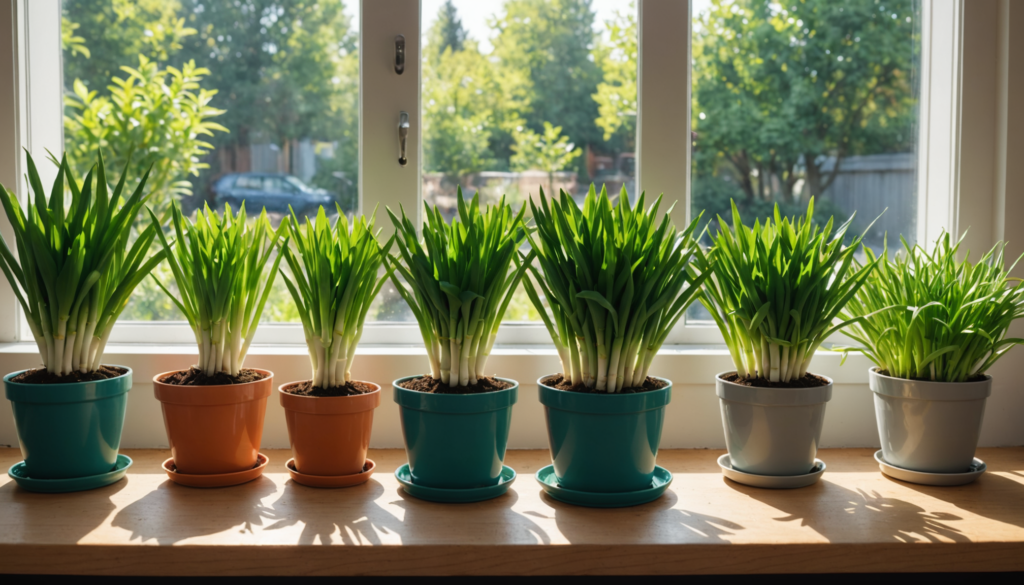
Understanding the Green Onion Growth Cycle
Green onions, also known as scallions, have a fast growth cycle, typically reaching maturity in about 21 days. This rapid growth allows for multiple harvests throughout the year, making them an excellent choice for indoor gardening enthusiasts looking for quick results.
Advantages of Cultivating Green Onions Indoors
Growing green onions indoors provides numerous advantages for home gardeners:
- Space Efficiency: They thrive in small pots, making them perfect for limited spaces.
- Freshness: You can enjoy fresh green onions right from your kitchen.
- Cost Savings: Reduces grocery expenses by allowing you to harvest your own.
- Year-Round Growth: Enjoy fresh produce regardless of the season.
- Low Maintenance: Requires minimal care, making it suitable for all skill levels.
These benefits make growing green onions an excellent choice for indoor gardening enthusiasts.
Why Green Onion Plants Thrive on a Windowsill
Green onions flourish in bright, indirect sunlight, which is typically available on a windowsill. The consistent light and temperature provided in this environment enable the plants to efficiently utilize moisture and nutrients, resulting in healthy and vibrant growth.
References:
How to Regrow Green Onions from Store-Bought Scraps
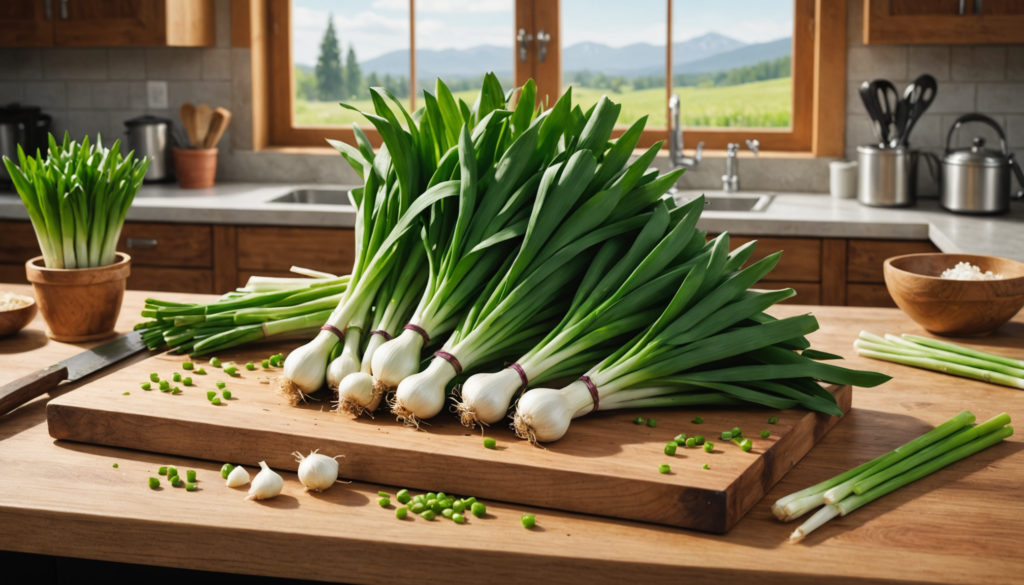
Selecting and Preparing Green Onions from the Store
Choose fresh green onions with firm stalks and intact roots, as these indicators signal the best potential for regrowth. By trimming the tops to about 1–2 inches above the white bulb, you help redirect the plant’s energy to develop new shoots while ensuring they are ready for replanting.
Regrow Green Onions in Water: Step-by-Step Method
- Place the trimmed white roots in a glass of water, ensuring the green tops remain above the water level.
- Change the water every few days to keep it fresh and clear, preventing any buildup of bacteria.
- Within a week, you should see new green shoots beginning to sprout, demonstrating that the plant is on its way to healthy regrowth.
Transplanting Green Onions in Soil for Longer Growth
Once the roots have grown to about 2–3 inches long, it’s time to transplant them into a pot filled with well-draining potting soil. Make sure the white bulb is just beneath the soil surface while keeping the green tops exposed; this method supports longer-term growth and enables more substantial harvests.
Best Soil and Container Options for Growing Green Onions Indoors
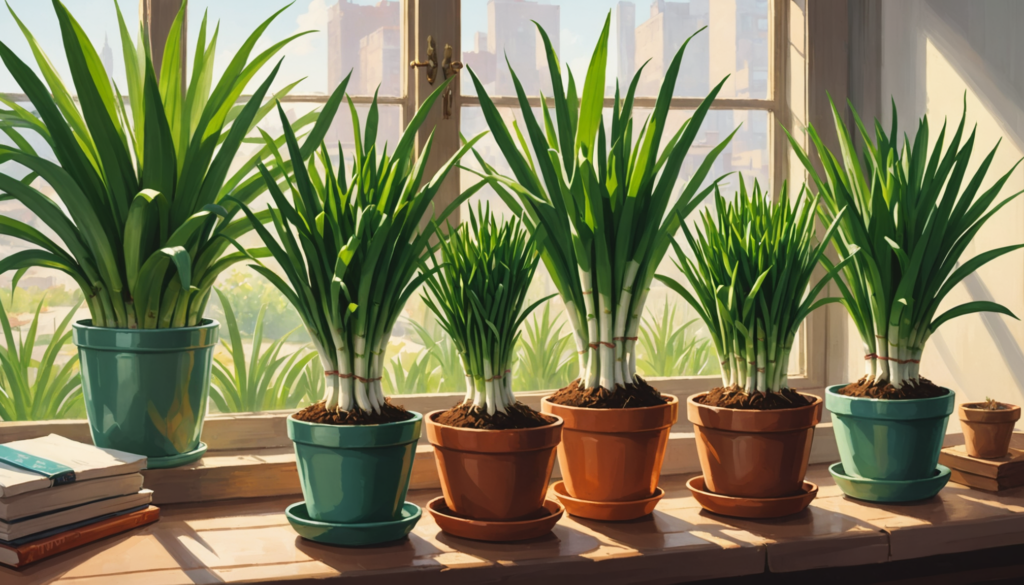
Ideal Soil Composition for Green Onion Plant Growth
A light, well-draining potting mix is ideal for green onion growth because it provides essential nutrients without retaining excessive moisture. Incorporating organic compost enriches the soil and promotes healthy root development, ensuring your green onions thrive.
Container Selection for Indoor Scallion Gardens
When selecting containers, ensure they have drainage holes to prevent excess water from causing root rot. A pot that is at least 6–8 inches deep allows enough space for root development while ensuring that your green onions have access to nutrients.
Setting Up Proper Drainage and Watering Systems
Good drainage is crucial for preventing waterlogged roots, which can lead to decay. Water your green onions only when the top inch of soil feels dry to maintain consistent moisture without oversaturation, which supports healthy growth.
Resources:
Maintenance and Care for Your Indoor Green Onion Garden
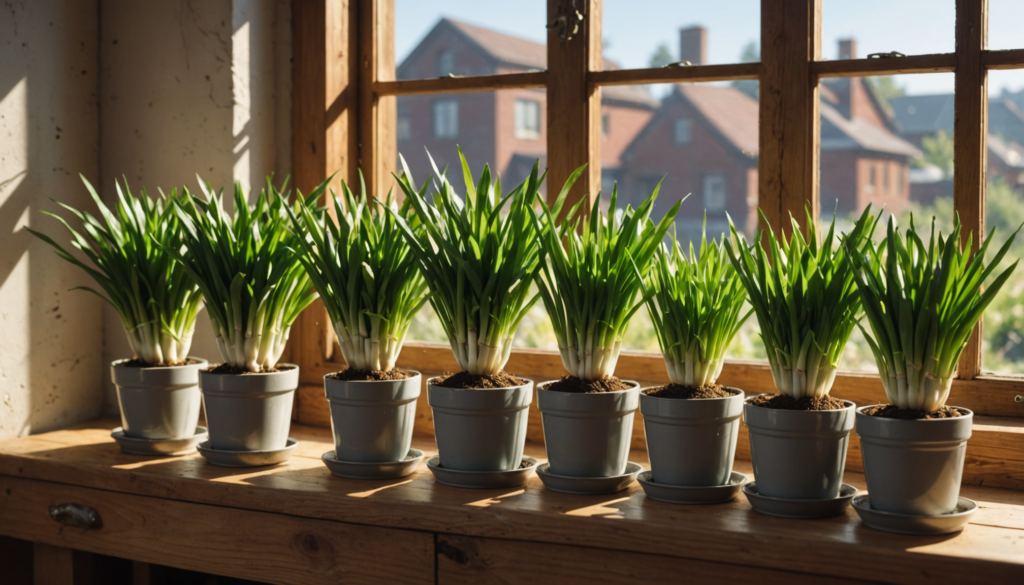
Light Requirements for Healthy Green Growth
Green onions require about 12–14 hours of light daily to thrive. A bright windowsill or supplemental grow lights can help provide the necessary light levels for optimal growth and ensure that your plants produce robust green leaves continuously.
Preventing Common Pests and Diseases
Regular inspections of your plants are essential in catching pests such as aphids and fungus gnats early. Implementing good air circulation and using organic pest control methods will help maintain a healthy indoor garden environment.
Routine Cutting Techniques to Promote Regrowth
Regularly trimming the green tops encourages new growth while leaving enough of the bulb intact for nutrient storage. This practice not only ensures a continuous supply of fresh green onions but also promotes overall plant health.
Harvesting and Using Your Homegrown Green Onions
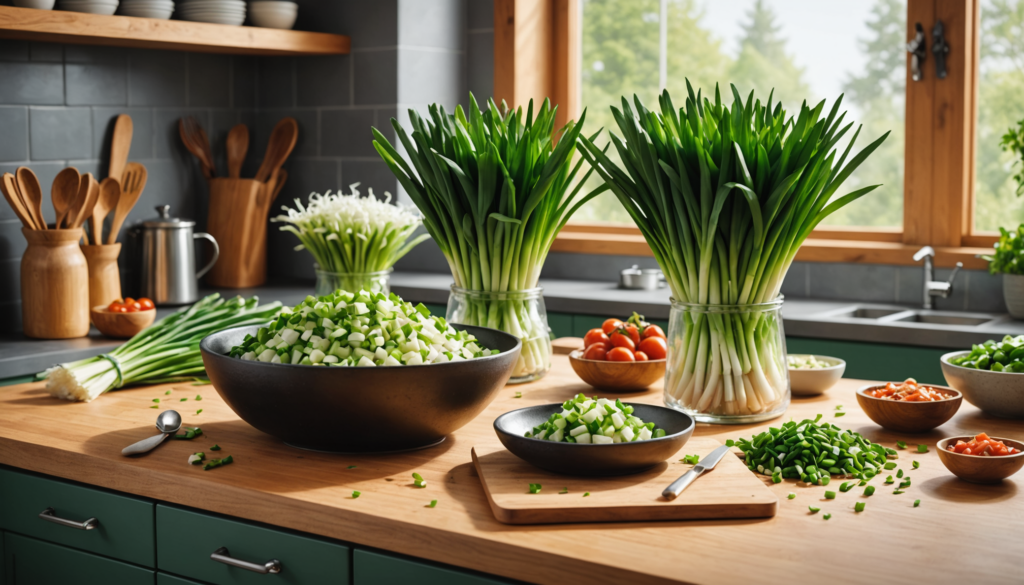
When and How to Harvest Your Green Onions Indoors
Green onions are ready for harvest when their green tops reach at least 6 inches in height. By cutting just above the white root, you allow the plant to retain its nutrients and support ongoing regrowth for future harvests. It’s beneficial to harvest in the morning when the flavor is at its peak, ensuring that you get the freshest taste in your dishes.
Creative Ways to Use Scallions in Your Kitchen
Fresh green onions bring a mild flavor and bright color to various dishes. They can be added to salads, soups, and stir-fries, enhancing the overall taste while providing nutritional benefits that complement other ingredients. Additionally, they can be used as a garnish for tacos, omelets, or grilled meats, making them a versatile ingredient that can elevate many meals. (Taste of Home)
Tips for Best Flavor and Freshness
Using organic compost enhances flavor while maintaining nutrient levels. Trim only what you need during each harvest to encourage ongoing regrowth and ensure fresh green tops. For an even better flavor experience, consider harvesting green onions early in the day and using them fresh in your recipes rather than storing them for long periods.
Troubleshooting Common Issues with Indoor Green Onions
Monitoring for yellowing leaves or slow growth can indicate overwatering or insufficient light. Adjusting your watering schedule and ensuring adequate light exposure will help keep your green onions healthy. Regularly checking for pests and maintaining good air circulation in your indoor garden will also help prevent common issues and promote robust growth.
Expert Tips for Successful Indoor Green Onion Gardening
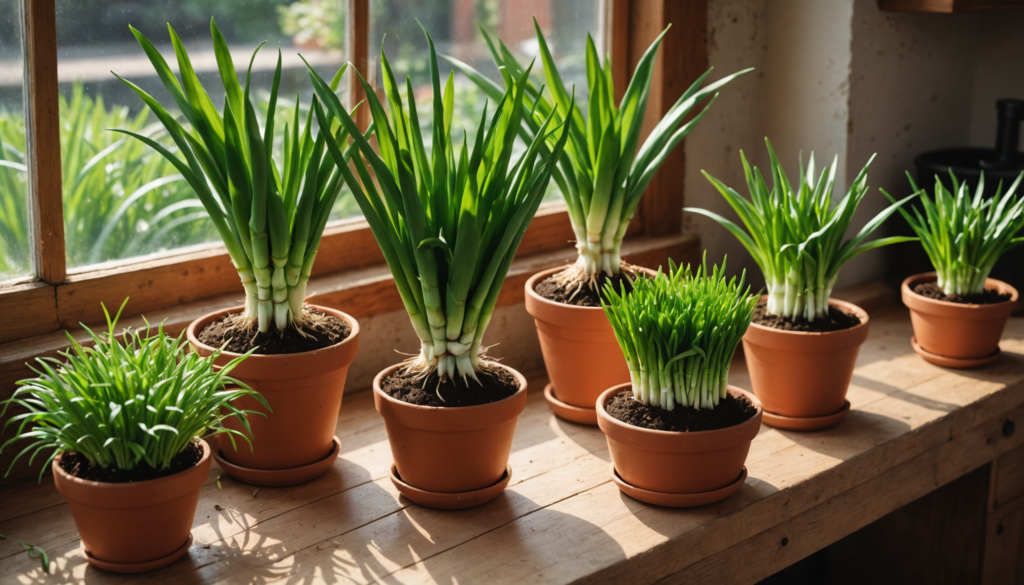
Interviews with Experienced Indoor Gardeners
Experienced gardeners emphasize starting with healthy store-bought green onions and highlight the importance of regular maintenance for optimal growth. Their insights can enhance your gardening journey and inspire you to experiment with different growing conditions, such as varying light sources and potting mixes, to find what works best for your indoor space.
Current Research on Indoor Gardening Techniques
Recent studies indicate that effective management of light and nutrients leads to better growth rates in indoor plants. Implementing these findings can significantly improve your indoor gardening success with green onions, allowing you to maximize yield while minimizing resource use. Staying informed about the latest gardening techniques can help you adapt your methods over time, ensuring a thriving indoor garden.
Conclusion
Planting green onions indoors is a straightforward and rewarding project that can yield delicious flavors year-round. By following proper care techniques—such as soil preparation, container selection, adequate light exposure, and routine maintenance—you can enjoy continuous harvests of fresh green onions right from your kitchen.
FAQs
1. How often should I change the water?
Change the water every few days to keep it clean and support healthy growth. Fresh water helps prevent bacterial buildup and ensures that the roots receive adequate nutrients, promoting vigorous regrowth of your green onions.
2. What type of potting soil works best?
A well-draining potting mix enriched with organic matter is ideal for growing green onions indoors. This type of soil provides the necessary nutrients while allowing for proper drainage, which is essential for preventing root rot and supporting healthy plant development.
3. How much sunlight do green onions need?
Green onions thrive with approximately 12–14 hours of bright, indirect sunlight daily to ensure optimal growth. Placing them in a sunny window or using supplemental grow lights will help maintain their health and promote continuous growth throughout the year.
